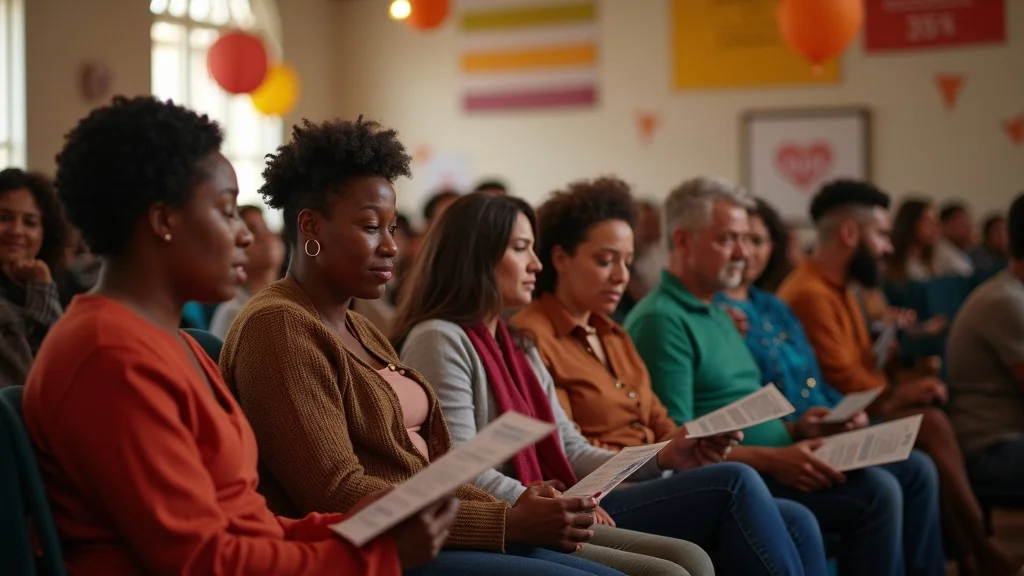Did you know that donor motivation has hit a 20-year low, threatening the future of both everyday donor and major donor engagement? Across the nonprofit sector, leaders are scrambling to confront an alarming reality — donor participation rates are plummeting, and charitable giving is no longer a given. If you’ve noticed fewer gifts or waning enthusiasm, you’re not alone. This article uncovers why donor motivation decline happens and reveals proven ways to reignite passion for philanthropy before it’s too late.
Shocking Trends: The Current State of Donor Motivation Decline
In recent years, the nonprofit sector has seen a drastic shift: donor motivation decline is accelerating, with participation rates at unprecedented lows. Data from leading institutions, including the Lilly Family School of Philanthropy and the Fundraising Effectiveness Project, highlight a genuine crisis. Nonprofits report an unprecedented drop in the total donor pool, and the donor retention rate—a critical measure of stability—has dropped below 45% nationwide. This trend is not limited to small donors: even high-value major donors are reevaluating their commitment, leaving programs underfunded and goals unmet.
This warning isn’t just statistical—it's deeply felt on the ground. Fundraising teams struggle as repeat givers disappear, and board members question how a once-engaged community can become disconnected. Many professionals wonder how everyday donors and major gifts became so elusive. The need for immediate intervention is clear: if organizations can’t stop the slide in donor participation, both mission and impact are at stake.

"Recent surveys show that donor motivation decline is accelerating, with participation at a 20-year low."
What You'll Learn in Tackling Donor Motivation Decline
- Root causes of donor motivation decline and its effect on everyday donor participation
- Strategies to boost donor retention and reignite charitable giving
- Ways to leverage new tools and communication styles to engage everyday donors
- Actionable insights for nonprofit leaders and fundraisers
The Anatomy of Donor Motivation Decline: How Did We Get Here?
The story of declining donor motivation is multilayered and stretches across shifting social, economic, and technological landscapes. What makes this crisis particularly hard to combat is that it affects both everyday donor participation and high-stakes major gift commitments. At its core, donor motivation decline is driven by weakened personal connections, changing donor expectations, and an erosion of trust in nonprofit effectiveness. Today’s donors want to see the direct impact of their support and receive authentic communications, not just mass appeals. Meanwhile, increased competition for attention and dollars—from a growing number of causes and crowdfunding platforms—further dilutes the power of traditional fundraising approaches.
Institutional research, such as that by the Indiana University Lilly Family School of Philanthropy, reveals that sentiment among everyday donors has shifted. Donors feel their contributions should make tangible changes and be recognized with genuine engagement. As nonprofit organizations recalibrate, understanding the multi-faceted roots of motivation decline is the crucial first step toward sustainable renewal.
Examining Key Research: Lilly Family School & Everyday Donors
The Indiana University Lilly Family School of Philanthropy has been a beacon for understanding modern giving trends. Their research dissects patterns among everyday donors—those who make small, recurring gifts—versus major donors who provide transformative support. Recent analyses point out that everyday donors are increasingly skeptical: economic uncertainties, institutional mistrust, and the overwhelming volume of asks via social media all play damaging roles. The “Generosity Commission” and the “Fundraising Effectiveness Project” echo these findings: even small donor participation is dropping, eroding what was once a reliable revenue base for countless missions.
For major donors, the dynamic is shifting, too. As the landscape changes, these philanthropists demand more detailed impact reports and a personal connection before they make another major gift. The Lilly Family School reports a growing trend: as wealth transfer creates new potential donors, younger philanthropists are more selective, prioritizing transparency and alignment with personal values. This knowledge is crucial for the nonprofit sector—without insight into these evolving attitudes, organizations risk falling behind in the race to capture ongoing support.

The Impact on Charitable Giving and Donor Participation
The ripple effects of donor motivation decline are felt well beyond individual fundraising campaigns. When donor participation falters, the immediate result is a decrease in charitable contributions. For organizations that depend equally on everyday donors and a handful of major donors, this double hit can destabilize annual budgets, force program cuts, and even threaten long-term viability. The most worrisome consequence reported by the Family School of Philanthropy is a diminishing culture of philanthropy: fewer people see giving as a core part of their identity or civic duty.
In practical terms, fewer everyday donors means a shrinking donor pipeline. Planned giving prospects and future major gifts rely on high engagement at entry levels: when this dries up, the whole ecosystem suffers. The nonprofit sector’s resilience is tested—if organizations can’t motivate existing supporters and convert new ones, funding gaps will only widen. Modern donors make decisions quickly and expect seamless, meaningful engagement. Nonprofits must adapt or risk being left behind in a rapidly evolving world.
Root Causes: Everyday Donor and Major Donor Motivation Decline
Technological Shifts & Social Media’s Role in Donor Engagement
The rise of social media has fundamentally changed how nonprofits engage with their donor base. While platforms like Facebook, Instagram, and LinkedIn offer unprecedented reach, they’ve also contributed to donor motivation decline in subtle yet powerful ways. The constant barrage of fundraising appeals, cause marketing, and disaster giving can create “donor fatigue,” especially among everyday donors. These platforms reward instant gratification and viral moments, making it harder for organizations to build sustained relationships and promote personal connection. Messages must cut through the digital noise and clearly demonstrate impact—something the traditional annual appeal letter no longer achieves alone.
Complicating matters, the expectations around digital engagement are rising. Donors want personalized touchpoints, relevant stories, and interactive opportunities to track their donations’ effectiveness. However, few nonprofits have the tools or staff to deliver this at scale. As a result, donor engagement becomes fragmented, and the risk of donor churn increases. Mastering social media is now essential for reversing this tide, as it allows for the kind of targeted, authentic outreach today’s donors crave.

Economic Factors Influencing Donor Motivation Decline
Increased economic pressure is another major player in the story of donor motivation decline. Inflation, job insecurity, and global economic instability affect both the average household and high-net-worth individuals alike. As costs rise, discretionary spending tightens, making it hard for everyday donors to maintain previous giving habits. The 2023 “Wealth Transfer” phenomenon, where trillions move to younger generations, hasn’t yet translated into higher charitable giving. New inheritors tend to be more cautious, philanthropic, but less trusting of traditional nonprofits. Meanwhile, major donors may delay or scale back their gifts until markets stabilize or until they see stronger stewardship and transparency from recipient organizations.
This environment puts nonprofit leaders in a bind: how do you appeal to empathy and generosity when everyone is watching their wallets? Smart organizations respond by demonstrating clear impact, offering flexible giving options, and thanking donors in more meaningful ways. Ultimately, creating a sense of shared purpose helps all donors—even when times are tough—feel good about their charitable contributions and stay engaged in the long term.
Evolutions in Donor Motivations and Demographics
The motivations that drive philanthropy are not static—they evolve alongside demographic, social, and cultural shifts. Today’s emerging donor base is younger, more diverse, and more tech-savvy than ever before. They are also more likely to question how their donation dollars are being used and demand proof before giving again. For organizations accustomed to relying on loyal repeats, this represents a seismic change. The desire for social justice, alignment with personal values, and a direct line to impact all shape how everyday donors and major donors see their role in the nonprofit ecosystem.
The Lilly Family School and other research bodies underscore that the new generation of donors often supports causes, not institutions; campaigns, not organizations. Incentivized giving (think: peer-to-peer and digital challenges) is on the rise, and organizations that don’t adapt risk losing relevance altogether. As these demographic trends continue, it will take dedication and innovation to ensure that donor motivations remain strong—and that donor participation does not decline further in the coming decade.

The Real Cost: Donor Retention Decline and Lost Opportunities
Declining donor retention is more than a numbers problem—it threatens the sustainability and reach of nonprofit missions. As fewer everyday donors return, organizations spend more time and money on acquisition over stewardship, stretching already-tight resources. This shift creates a dangerous cycle: fewer returning donors lead to greater reliance on untested prospects, compounding financial uncertainty. Long-standing donor participation crashes, resulting in lost opportunities to nurture potential major donors from the pool of loyal supporters. What once made sense—focusing oxygen on major gift acquisition—now seems shortsighted; without strong annual retention, the major donor pipeline shrinks, and vital programs face cuts or closures.
| Year | Donor Retention Rate (%) | Total Donor Count | Fundraising Effectiveness |
|---|---|---|---|
| 2018 | 50 | 1,200 | Steady |
| 2020 | 47 | 1,050 | Slight Decline |
| 2022 | 44 | 920 | Notable Decline |
| 2023 | 41 | 830 | Significant Impact |
Expert Opinions: Why Donor Motivation Decline Persists
Why does this crisis endure, even as nonprofits innovate with campaigns and tools? Experts in the nonprofit sector argue that, at its heart, donor motivation decline reflects a failure to nurture true personal connection. When organizations chase volume over relationships, or rely too heavily on transactional digital giving, donors feel like numbers—leading them to disengage. The message from the school of philanthropy is clear: it’s time to prioritize the donor experience, not just the act of giving. Listening to supporters’ stories, acting on feedback, and celebrating milestones in donors’ own words rebuilds trust and engagement from the inside out.
"If we don’t speak to the heart, we lose the soul of philanthropy." – Nonprofit Expert
Only by reclaiming the emotional core of giving—and treating everyday donors with the care often reserved for major donors—can nonprofits reverse this worrying trend. Data, technology, and best practices must support, not replace, the human touch at the center of all successful philanthropy.
Strategies to Reverse Donor Motivation Decline
Personalizing Messages for Everyday Donors & Major Donors
One of the most effective ways to counteract donor motivation decline is by crafting tailored communications that resonate with both everyday donors and major donors. Personalized emails, customized thank-you notes, acknowledgment of giving history, and targeted appeals that reflect donors’ past preferences show supporters that they are more than just names on a list. Using donor databases or modern CRM tools, nonprofits can segment their base to ensure messaging is relevant and timely. When donors feel seen, valued, and understood, their motivation to give and participate rises significantly. Adding personal touches—like a hand-signed card from a board member, or a custom video update—strengthens the emotional connection at the root of philanthropic commitment.
For major donors, the approach should be even more bespoke. These supporters expect close stewardship, regular impact reporting, and opportunities for meaningful involvement—such as behind-the-scenes tours, exclusive briefings, or invitations to participate in strategic planning. A well-timed phone call or invitation to lunch can show appreciation and open a dialogue. Regardless of giving level, every supporter must know that their unique contribution is essential to the cause’s future.
How Leading Nonprofits Rejuvenate Donor Passions (featuring case studies on reversing motivation decline)
Cultivating Donor Engagement Through Impactful Storytelling
The most successful nonprofits don’t just ask for support—they share powerful stories that connect emotionally and inspire action. Highlighting real-life outcomes, testimonials from beneficiaries, and “before and after” narratives show donors exactly how their contributions make a difference. Consistent, authentic communication is essential. Instead of only reaching out during campaigns, organizations should regularly share updates via newsletters, social media, and even SMS, each time making the donor the hero of the story. Incorporating photos, videos, and direct testimonials deepens the sense of involvement and fosters ongoing engagement, particularly for everyday donors who crave visible impact.
Consider inviting donors to share their own giving stories, spotlighting supporters and volunteers in digital communications, and using multimedia to foster a sense of shared purpose. Storytelling doesn’t just communicate—it builds a community of mission-driven individuals who feel ownership over the outcomes. For both small donors and major contributors, seeing themselves reflected in your journey keeps motivation high and participation steady.

Role of Schools of Philanthropy in Stabilizing Donor Motivation Decline
Lilly Family School Initiatives: Bridging Gaps in Donor Participation
The Indiana University Lilly Family School of Philanthropy and other schools of philanthropy play a crucial role in understanding and reversing donor motivation decline. These academic leaders develop evidence-based solutions, deliver frontline training, and facilitate innovation in donor-centered fundraising. Through groundbreaking research on donor motivations, the school helps nonprofits identify when and why donor participation drops. They offer training modules in stewardship, donor communication, and technology for engagement—equipping leaders to apply best practices on the ground. The Lilly Family School has piloted programs that introduce impact measurement and transparent reporting, tools that both everyday donors and major philanthropic families increasingly demand.
In addition, the school of philanthropy brings together practitioners, researchers, and thought leaders to share case studies, highlight successes, and troubleshoot persistent roadblocks. Their studies often become the foundation for sector-wide change. Nonprofits equipped with these insights can bridge the gap between what donors want and what organizations deliver—leading to higher retention, renewed giving, and a reinvigorated culture of philanthropy at every level.
Using Social Media and Modern Tools to Combat Donor Motivation Decline
While social media once contributed to donor fatigue, when used strategically, it is a powerful antidote to donor motivation decline. Platforms like Instagram Live, TikTok, and interactive Facebook storytelling allow nonprofits to humanize their work, connect with younger donors, and showcase specific projects in real-time. Modern tools such as donor dashboards, online giving portals, and automated stewardship campaigns help scale personal engagement without overwhelming busy staff. Importantly, the right technology empowers data-driven decisions: nonprofit leaders can track donor engagement, measure which content resonates, and quickly adapt to changing donor preferences.
Peer-to-peer fundraising powered via mobile apps, “text-to-give” options, and personalized digital updates ensure that both everyday donor and major contributor segments receive relevant communication. The best organizations blend high-tech outreach with high-touch follow-up, ensuring motivation never gets lost in the digital shuffle. Those that harness these tools to foster meaningful, two-way conversations will stand out in a crowded marketplace—and set new standards for impact and stewardship.
Harnessing Social Platforms to Reinvigorate Everyday Donor Engagement
Creative Approaches: Unique Events & Peer-Led Fundraising
To rekindle the spirit of giving, many nonprofits are turning to creative, community-driven approaches. Peer-to-peer fundraising events—where donors mobilize their networks and act as campaign ambassadors—are shown to boost both participation and motivation. By empowering supporters to take ownership, organizations give space for personal storytelling, competition, and celebration. Public recognition and gamification incentives help make donor participation fun again, with leaderboards, social sharing, and reward systems offering new reasons to stay connected. Ambassador programs also transform everyday donors into passionate advocates, fostering a sense of belonging that carries over into higher retention rates and even potential for major gift cultivation.
Incentive-based giving models are on the rise, from matching gift challenges to micro-donation “impact milestones.” By combining fundraising with memorable, mission-focused experiences—like community fairs, volunteer days, or virtual reality tours—organizations reconnect with existing supporters and introduce missions to new audiences. These strategies make giving visible, collaborative, and personal, addressing the very root causes of donor motivation decline.

- Peer-to-peer campaign successes
- Ambassador programs for donor retention
- Incentive-based giving and charitable giving gamification
People Also Ask: Addressing Common Questions on Donor Motivation Decline
What are the main reasons behind donor motivation decline?
Donor motivation decline is driven by a complex mix of factors. These include donor fatigue due to constant appeals, economic uncertainties, generational shifts in philanthropic habits, and a growing desire for personal connection and transparency. Additionally, the sheer volume of giving platforms has increased competition, making it harder to maintain engagement. Nonprofits must adapt by building stronger relationships, providing tangible impact, and communicating authentically to address these root causes.
How does donor motivation decline affect charitable giving?
When donor motivation slips, charitable giving as a whole suffers. Fewer everyday donors means a shrinking base of support, making organizations more financially vulnerable. It also disrupts long-term planning, limits program expansion, and reduces the diversity of philanthropic participation. If not addressed, motivation decline can erode the overall culture of giving, threatening the future of both small community charities and major national organizations.
How can nonprofits improve donor retention amid declining motivation?
Nonprofits can improve donor retention by focusing on personalized communication, sharing transparent impact updates, and engaging supporters between campaigns. Listening to donor feedback, recognizing milestones, and offering creative involvement opportunities—such as peer-led fundraisers or volunteering—help foster loyalty. Leveraging modern tools like CRM systems and social media can automate engagement while preserving the essential personal connection every donor seeks.
Are everyday donors or major donors more affected by motivation decline?
Both everyday and major donors are impacted by motivation decline, but the effects and drivers may differ. Everyday donors tend to be sensitive to economic changes and seek recognition for small donations. Major donors, on the other hand, often look for alignment with personal values, detailed reporting, and strategic involvement. Successful organizations recognize these nuances and develop tailored approaches for each group to maintain strong relationships and ongoing support.
What role do economic trends play in donor motivation decline?
Economic trends, such as inflation, market volatility, and employment instability, directly influence how much and how often people give. Everyday donors may cut back or pause their support in tough times, while major donors might delay large gifts or shift priorities. Nonprofits that demonstrate flexibility, offer clear value, and provide alternative giving options are better positioned to weather economic storms and keep donors motivated amid change.
Frequently Asked Questions About Donor Motivation Decline
-
How can I tell if my organization is experiencing donor motivation decline?
Your organization may notice fewer repeat gifts, lower event participation, or a shrinking pool of small donors. Monitor retention rate and survey donors to understand engagement trends. -
What tools or platforms are best for donor engagement?
CRM systems (like Salesforce or Bloomerang), personalized email marketing, and social media engagement platforms are highly effective for deepening donor relationships and automating communication. -
Does generational change impact donor motivations?
Yes, younger generations prioritize transparency, social impact, and digital connection over tradition. Nonprofits must adapt strategies to match these evolving expectations and inspire lifelong giving.
Key Takeaways on Managing Donor Motivation Decline
- Donor motivation decline is a pressing trend requiring holistic solutions
- Engagement, personalization, and impact measurement can reignite passion
- Leverage technology and storytelling to reconnect with everyday donors and major donors
Let’s Reignite Your Donor Community
"For personalized guidance on inspiring your donors, call me the Chaplain 786-333-5270—let’s start a new chapter of passion in giving."
Recent studies have highlighted a significant decline in donor motivation, posing challenges for nonprofit organizations. The article “Donor Confidence Continues to Decline as Economy Takes Toll” from Giving USA discusses how economic factors like stock market volatility and inflation have led to decreased donor confidence, with 24% of donors planning to give less in 2023. (givingusa.org) Similarly, the Yale School of Management’s piece, “Understanding Donor Behavior: Insights for Increasing Engagement and Charitable Giving,” emphasizes the importance of understanding donor motivations and suggests strategies such as creating a sense of community and personalizing communications to enhance engagement. (som.yale.edu) For nonprofits aiming to address donor motivation decline, these resources offer valuable insights into the underlying causes and effective strategies to re-engage supporters.
 Add Row
Add Row  Add
Add 




Write A Comment